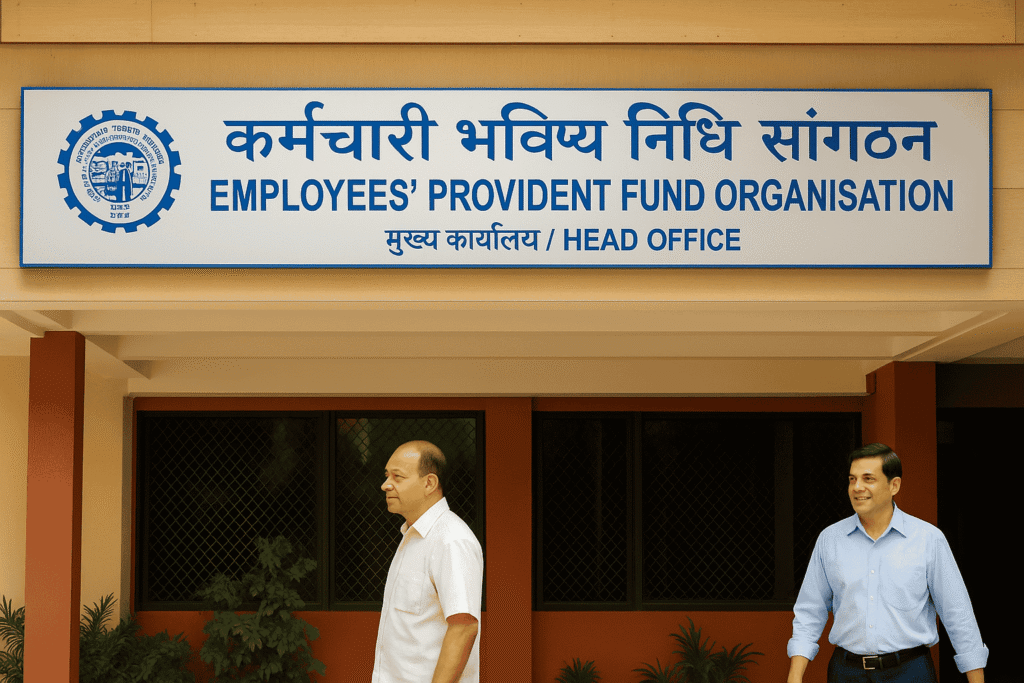
EPFO for Indian Employees
Understand the benefits of EPFO for Indian employees the Employees’ Provident Fund Organization (EPFO).
This is one of India’s largest social security organizations, established to provide financial security and retirement benefits to workers.
Understanding the EPFO and how it can benefit you is essential for long-term financial planning, especially for salaried employees.
Here is a detailed guide to help you understand its usefulness and benefits.
Table of Contents
What is EPFO?
The EPFO manages the Employees’ Provident Fund (EPF), a scheme designed to help employees accumulate savings over time.
It is mandatory for companies with 20 or more employees and applies to both the public and private sectors.
A portion of an employee’s salary is deducted monthly, and an equal contribution is made by the employer, helping build a retirement corpus.
Key Components of EPFO for Indian Employees:
1. Employees’ Provident Fund (EPF):
The main component, where 12% of the employee’s basic salary (plus dearness allowance) is contributed towards the provident fund. The employer matches this amount, although a portion goes toward pension contributions.
2. Employees’ Pension Scheme (EPS):
Part of the employer’s contribution (8.33%) is directed to the Employees’ Pension Scheme, which provides pension benefits after retirement.
3. Employees’ Deposit Linked Insurance (EDLI):
For Indian employees, this insurance cover that employees get automatically as part of their EPFO membership, with no additional cost. It ensures that nominees receive a lump sum payment in case of the employee’s untimely death during their service.
How EPFO Works:
- Contribution: Every month, both employee and employer contribute 12% of the employee’s basic salary into the EPF account. Of the employer’s contribution, 8.33% goes to the Employees’ Pension Scheme (EPS), and the remaining goes into the EPF account.
- Interest: The EPF corpus earns a set interest rate, which the government revises annually. This amount is added to the balance, compounding your savings over time.
- Withdrawal: The EPF can be withdrawn partially or fully based on specific conditions like retirement, unemployment, marriage, education, home loan repayment, or medical emergencies.
Benefits of EPFO for Indian Employees:
1. Long-Term Savings: The EPFO for Indian employees is to encourage them to save consistently for their retirement. As contributions are deducted automatically from salaries, it ensures that a retirement corpus builds up gradually.
2. Pension Scheme (EPS): The EPS offers pension benefits to employees who complete at least 10 years of service. After retirement (at age 58), the employee receives a lifelong pension, providing additional financial security.
3. Tax Benefits: Contributions to the EPF are eligible for tax deductions under Section 80C of the Income Tax Act. Additionally, the accumulated balance is tax-free if withdrawn after five years of continuous service.
4. Insurance Coverage (EDLI): The EDLI provides a lump-sum insurance amount to the employee’s nominees in case of death during employment, offering financial support to the family.
5. Interest Income: The interest earned on the EPF balance is compounded annually, helping employees grow their retirement savings. The interest is usually higher than regular savings accounts, which makes the EPF a great long-term investment.
6. Portability: The Universal Account Number (UAN) makes the EPF portable across jobs. When employees change jobs, they can easily transfer their EPF account using the UAN, which simplifies the process of maintaining and growing their provident fund corpus.
7. Emergency Withdrawals: The EPF allows employees to make partial withdrawals for various emergencies like medical treatment, higher education, home purchase, or marriage. This acts as a financial safety net in times of need.
8. Security and Reliability: The EPF is backed by the Indian government, making it one of the most secure retirement savings options available.
How to Use EPFO Services for Indians:
- Universal Account Number (UAN): Every employee gets a unique UAN that acts as a lifelong identification number for their EPF account. Employees can use the UAN to check their balance, make claims, and update KYC details.
- Online Services: The EPFO offers various online services, such as checking EPF balance, submitting withdrawal claims, and transferring EPF accounts. Employees can log in to the EPFO Member Portal or use the UMANG app to access these services.
- Tracking EPF Balance: You can track your EPF balance using the EPFO portal, the UMANG app, or by sending an SMS or missed call to the designated EPFO number.
- KYC Updates: Keeping your KYC information (Aadhaar, PAN, bank details) up to date ensures faster processing of claims and other benefits.
- EPF Withdrawal: Employees can apply for partial or full withdrawal of their EPF balance online. The amount is directly credited to the bank account linked with your UAN.
Common Challenges and Tips
We shall cover the problems and why the requests can be rejected in the next article.
Conclusion: EPFO for Indian employees
The EPFO is an invaluable tool for employees in India, offering a safe and structured way to save for retirement while also providing additional benefits like pension and insurance.
Its tax benefits, long-term savings potential, and emergency withdrawal options make it a versatile and essential part of financial planning.
By staying informed and regularly checking your EPF account, you can ensure that you make the most of this crucial employee benefit system.
For more information, employees can visit the official EPFO website or use the UMANG app to access EPF-related services at their fingertips.
I hope this blog about EPFO for Indian employees has got you an answer. If not, let us know your queries
We at Employnova (www.employnova.net) be happy to help any time if you have a question.


